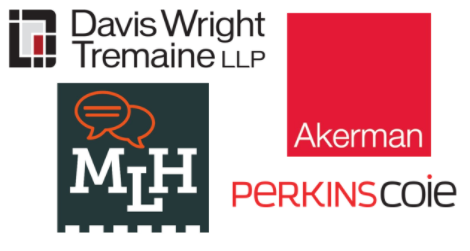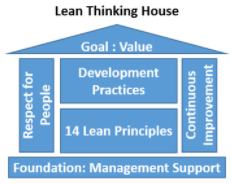In July 2017, LegalRnD Director Dan Linna wrote a blog post detailing the various ways the LegalRnD program has furthered one of its core tenants: law schools serving as labs for legal-services delivery innovation. In that post, he promised that we would do even more in the 2017-2018 academic year to advance that goal. One of the really exciting ways in which we have delivered on this promise is through innovation projects we are conducting in the LegalRnD Capstone course, Litigation:{Data, Theory, Practice, and Process}.
Litigation:{Data, Theory, Practice, and Process}
To further the idea of law schools serving as labs for innovation, since LegalRnD’s launch we have paired student teams with outside partners on a wide variety of projects. This semester, we’ve assembled 23 students in the LegalRnD capstone course (Litigation:{Data, Theory, Practice, and Process}) into teams to work on innovation projects with Perkins Coie, Davis Wright Tremaine, Akerman, and Michigan Legal Help. Each student team is working closely with the project partners to better understand a specific problem and the current condition and build an expert system or automate a process to help improve the legal-services delivery related to
 the problem. Neota Logic and ThinkSmart have provided the technology for these projects as well as student training.
the problem. Neota Logic and ThinkSmart have provided the technology for these projects as well as student training.
Each student team began by working closely with a project manager and subject matter expert at the project partner organization and undertaking a discovery process that would allow them to deeply understand the articulated challenge. We were careful to not solicit projects where the project partners already had a solution in mind and were simply looking for a student development team. Rather, we wanted the students to work with the partners on a problem where there was no clear “answer,” so they had the freedom to be creative with their possible improvements and innovations.
Submitted Projects
In addition to our desires for the class and the students, we also wanted to solicit projects that would create something of value for the project partners. To help us achieve these goals, Professor Linna and I conducted several meetings with the project partners and also created detailed guidelines in a project submission form. Our project partners went above and beyond to propose projects for our students that would meet our shared goals. Our students are working on a wide variety of highly relevant topics, as shown below:
- Automation of the process of reviewing and amending existing vendor contracts to conform to the requirements of Article 28 of the General Data Protection Regulation (GDPR)
- Automation of data breach analysis and advice for financial institutions
- Development of a technology tool that assists couples in dividing their assets in divorce
- Centralization of resources and process automation to assist attorneys working on pro bono asylum applications
- Automation of legal research for state consumer protection laws that govern gift cards
- Improving the process of verifying compliance of SEC disclosure documents using checklists and automation where appropriate
- Automation of Intellectual Property cease-and-desist letter creation
- Automation of third party subpoena response workflow
Laying the Foundation for Innovation
Before training the students in any technology, we began the semester by introducing the students to non-technical foundational skills such as process improvement, project management, and leadership. The idea was to foster innovation through early exposure to methodologies that promote a deep understanding of the problem and current state, going to “gemba” where the work is done, suspension of jumping to conclusions and making assumptions, rapid prototyping to test ideas, interaction with stakeholders, and striving for continuous improvement and continuous learning.

The importance of focus on the customer and the people and processes that deliver products and services cannot be overstated. When properly leveraged with this understanding, technology is an incredibly useful thing, and we have seen it do amazing things to improve the delivery of legal services. The students are building their innovation projects using either Neota Logic (a tool often used to build expert systems) or ThinkSmart (a workflow automation platform). Additionally, we have two teams supplementing their Neota Logic applications with documents instructing the project partners on how to train models using Kira (a supervised machine learning tool).
My Role: Technologist, Innovation Coach, and Relationship Manager
I am very fortunate that Professor Linna entrusted me with so much responsibility for his capstone course. At the outset of the course, we defined specific roles for me, as described below:
- Chief Technologist—I am here for the students as they are working with Neota Logic, ThinkSmart, and Kira to answer questions, put together learning materials that I think would be most beneficial, help coordinate their training, and provide insight as they work through the development process.
- Projects and Relationship Manager—The student teams are using Agile project management and the Improvement Kata to work towards meeting a specific challenge set by their project partners. I am there to communicate with the project partners, the student project teams, and to facilitate communication between the project partners and student teams. I ensure that the expectations of the project partners are being met, no issues go unchecked, and that the student teams have what they need to succeed.
- Innovation Coach—As an innovation coach, I lead student teams using the Improvement Kata, which is based on the Toyota Way and lean thinking. My job is not to solve the student’s problems, but to coach them through a disciplined process of discovery and learning. My job is to empower the students so that they continue to develop and become as successful as they can be. First, within the Improvement Kata framework, I ensure that students follow project management and process improvement best practices. Second, I help them establish target conditions–intermediate steps on their way to meeting the challenge. To achieve each of these target conditions, students identify all obstacles and then work on one obstacle at a time to overcome it. Students generate ideas and then determine the most efficient way to test their ideas (for those familiar with lean thinking, this consists of Plan-Do-Check-Act cycles). Third, I help them identify root causes of obstacles they are facing, and help them see how they, themselves, can remove barriers to their success. Finally, I encourage them to take the overall challenge articulated by their project partners as a baseline, and look for ways to deliver greater value to project partners. Being client-centric is a key component of lean and design thinking. Listening closely to clients and employing empathy as practiced in lean and design thinking allows professionals to better understand their customers’ problems and innovate by finding new ways to deliver value.
This capstone course highlights the competencies we emphasize at LegalRnD, and has been a great opportunity to engage students and create value for outside clients at the same time. I am looking forward to seeing the students’ final products in a few weeks.
